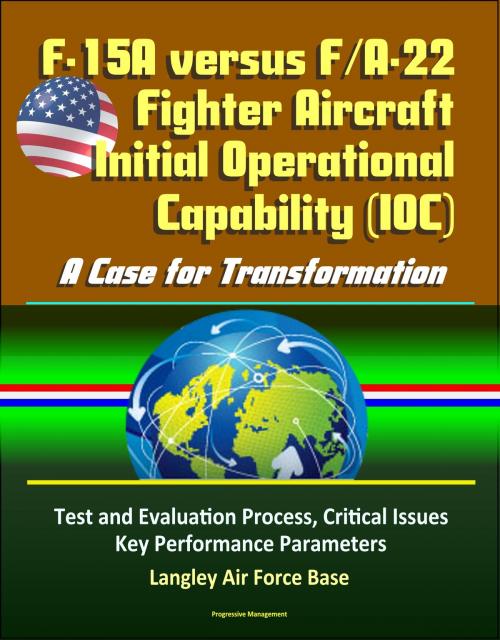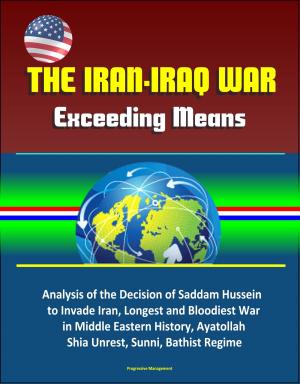F-15A versus F/A-22 Fighter Aircraft Initial Operational Capability (IOC): A Case for Transformation - Test and Evaluation Process, Critical Issues, Key Performance Parameters, Langley Air Force Base
Nonfiction, History, Military, Weapons, Aviation| Author: | Progressive Management | ISBN: | 9781370463244 |
| Publisher: | Progressive Management | Publication: | September 21, 2016 |
| Imprint: | Smashwords Edition | Language: | English |
| Author: | Progressive Management |
| ISBN: | 9781370463244 |
| Publisher: | Progressive Management |
| Publication: | September 21, 2016 |
| Imprint: | Smashwords Edition |
| Language: | English |
This report has been professionally converted for accurate flowing-text e-book format reproduction. The F/A-22 Raptor is a new weapons system replacing the F-15C Eagle. Its operational debut in 2005 comes at a time of constrained budgets, a changing global threat environment, and the ongoing global war on terrorism (GWOT). Because of the current security environment, the aircraft's more than 15 years of development, and the close scrutiny of the F/A-22's test and evaluation (T&E) program, the US Air Force needs the Raptor's initial operational capability (IOC) status to be successful. One means of achieving this is to recognize and implement the lessons learned from America's current air superiority fighter, the F-15 Eagle. And just perhaps the overall effect might be to challenge the US Air Force's approach to major weapons-system development. The F/A-22's development, testing, and IOC declaration at Langley AFB, Virginia, in December 2005 closely parallels the F-15A's experience of 29 years ago. This paper provides background information on both aircraft, their T&E processes, and their first operational assignments to Langley AFB. Comparisons are made, differences highlighted, and recommendations offered. While it may appear that everything about the F/A-22 is new, the path to its IOC is well worn. A fresh look at F-15A development yields valuable insights for emerging twenty-first-century USAF weapons systems. Surprisingly, the overall lessons of the F-15A in 1976 still apply to the F/A-22 of 2005.
This report has been professionally converted for accurate flowing-text e-book format reproduction. The F/A-22 Raptor is a new weapons system replacing the F-15C Eagle. Its operational debut in 2005 comes at a time of constrained budgets, a changing global threat environment, and the ongoing global war on terrorism (GWOT). Because of the current security environment, the aircraft's more than 15 years of development, and the close scrutiny of the F/A-22's test and evaluation (T&E) program, the US Air Force needs the Raptor's initial operational capability (IOC) status to be successful. One means of achieving this is to recognize and implement the lessons learned from America's current air superiority fighter, the F-15 Eagle. And just perhaps the overall effect might be to challenge the US Air Force's approach to major weapons-system development. The F/A-22's development, testing, and IOC declaration at Langley AFB, Virginia, in December 2005 closely parallels the F-15A's experience of 29 years ago. This paper provides background information on both aircraft, their T&E processes, and their first operational assignments to Langley AFB. Comparisons are made, differences highlighted, and recommendations offered. While it may appear that everything about the F/A-22 is new, the path to its IOC is well worn. A fresh look at F-15A development yields valuable insights for emerging twenty-first-century USAF weapons systems. Surprisingly, the overall lessons of the F-15A in 1976 still apply to the F/A-22 of 2005.















